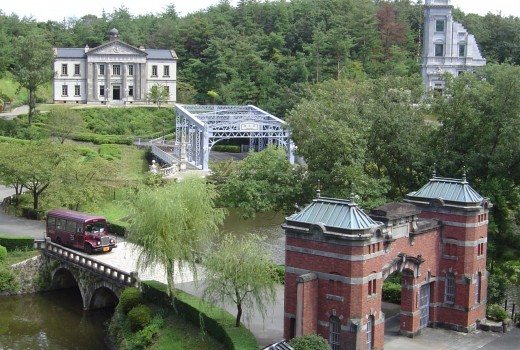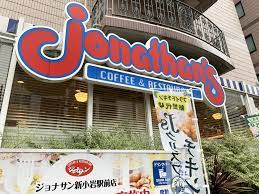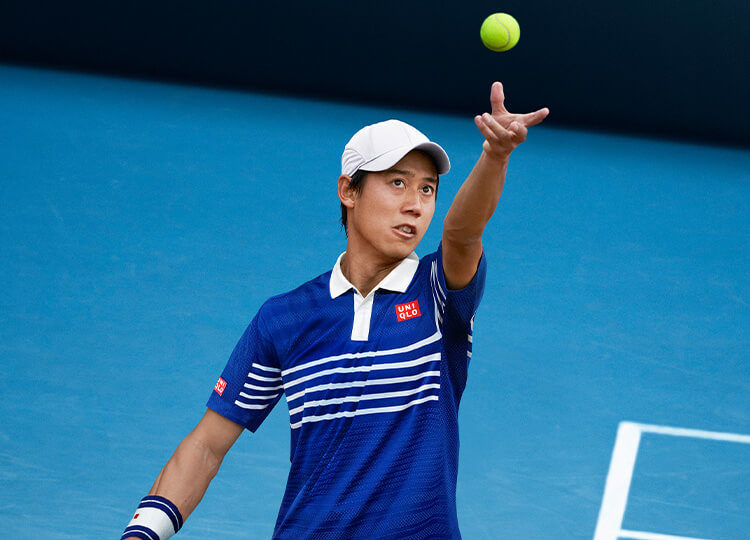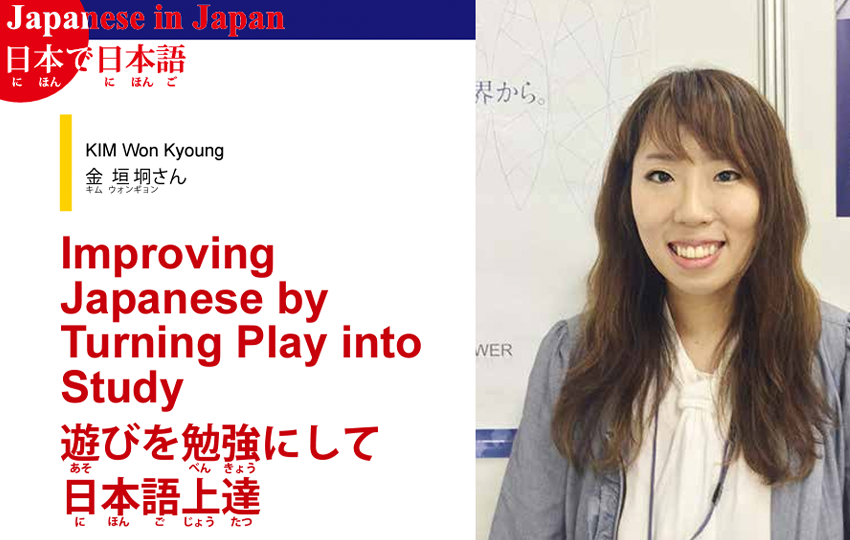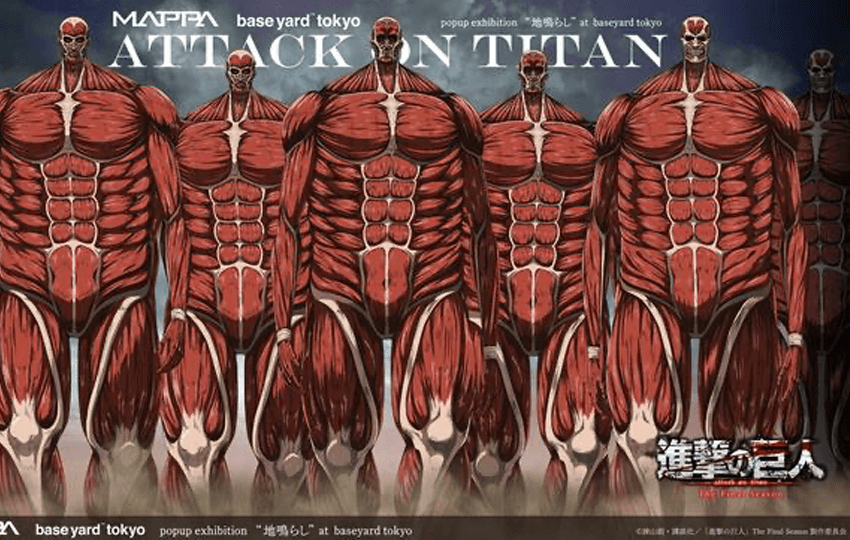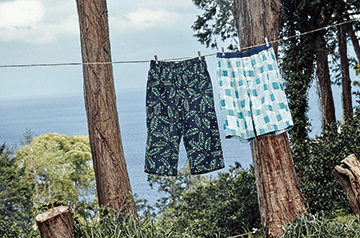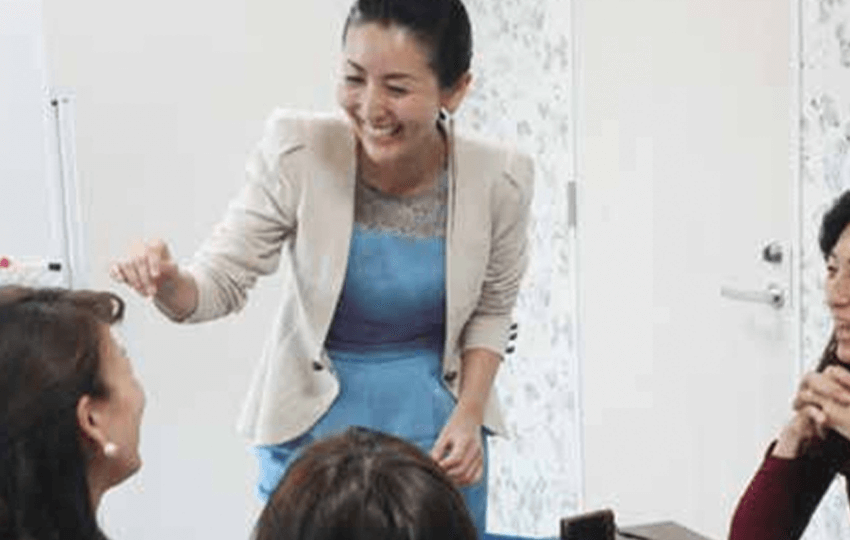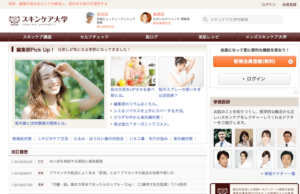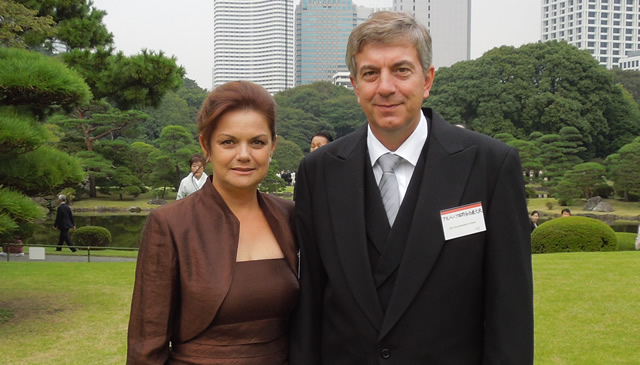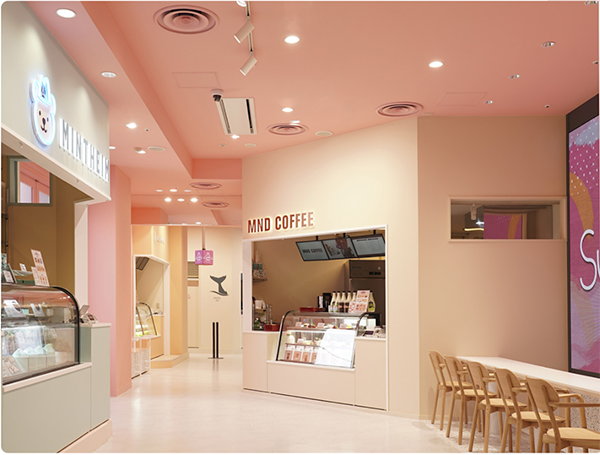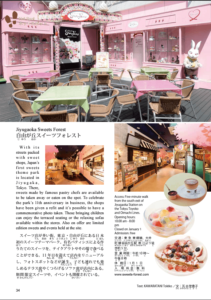-
This outdoor museum has a collection of rare architecture built in the Meiji era (19th to 20th centuries). This year it celebrates its 50th anniversary. Here you can enjoy a light meal at the former Imperial Hotel built by the distinguished American architect Frank Lloyd WRIGHT. Steam locomotives, retro Kyoto trams, and buses are operated every day, and can be used to move around the vast grounds. Many seasonal events are held, including sessions where visitors can wear kimono or hakama and have a commemorative photo taken. It is often used as a location for movies.- Access: 20-minute bus ride from Inuyama Station on the Meitetsu Inuyama Line. Near the Meiji-mura bus stop.
- Business hours: from 9:30 am to 5:00 pm (hours differ depending on the season)
- Closed days: August 4, 18, 25, December 31, every Monday from December to February. Closed on some days in January for maintenance.
- Admittance: 1,700 yen for adults (aged 18 and over). 2,700 yen for a ticket with a one-day pass for rides.
Meiji-mura Museum
明治時代(19~20世紀)を中心とした貴重な建造物を集めた野外博物館。今年オープンから50年を迎えた。著名なアメリカ人建築家、フランク・ロイド・ライトが建てた旧帝国ホテルでは軽食が楽しめる。蒸気機関車やレトロな京都市電、バスが毎日運転を行い、広大な敷地内の移動に利用できる。着物や袴姿での記念撮影体験や、季節ごとのイベントも数多く開催。映像作品のロケに使われることも多い。- 交通:名鉄犬山線犬山駅から路線バス明治村行き20分、下車すぐ。
- 営業時間:午前9時30分~午後5時(季節によって時間帯の変更あり)
- 休村日:8月4日、18日、25日、12月31日、12~2月の毎週月曜日。1月に数日間メンテナンス休日あり。
- 入村料:大人(18歳以上)1,700円、乗り物一日券付きは2,700円
-
[From August Issue 2015]
“Jonathan’s” is a family restaurant franchise that has approximately 300 restaurants in the Tokyo metropolitan area. The numerous dishes on offer contain carefully selected ingredients sourced from various regions. “Appetizers” are reasonably priced at 250 yen a dish and are popular with those who fancy a light meal or something to nibble on while having alcoholic drinks. Some restaurants locations also offer home delivery.
[No.1] Tandoori Chicken & Mexican Pilaf 899 yen
This long-selling dish has been on the menu for over 20 years. The curry-flavored chicken and spicy Mexican pilaf (fried rice) pairing has become a favorite for many.

[No.2] American Sauce Spaghetti with Snow Crab 869 yen
This pasta dish is made with flaked snow crab meat and is topped with a specially-made American sauce that gives it a creamy finish. It is a classic and popular Jonathan’s dish.

[No.3] Doria with Brightly Colored Vegetables 799 yen
This rice casserole contains lots of vegetables. The dish is accentuated with thick cream and a signature meat sauce.

Availability and prices may vary according to the restaurant.
Jonathan’s[2015年8月号掲載記事]「ジョナサン」は首都圏を中心に約300店舗を展開しているファミリーレストラン。各地から厳選したこだわりの食材を使った料理が多い。一品250円と手頃な価格の「アペタイザー」は、軽く食べたい人やお酒のおつまみに人気。宅配を行っている店舗もある。
【No.1】タンドリーチキン&メキシカンピラフ 899円
20年以上のロングセラー。やみつきになる人が多い、カレー風味のチキンとピリリと辛いメキシカンピラフ。
【No.2】ずわい蟹のアメリカンソーススパゲッティ 869円
ずわい蟹のほぐし身を使い、特製アメリカンソースでクリーミーに仕上げたパスタ。ジョナサンの定番人気商品。
【No.3】1日分の緑黄色野菜が摂れるドリア 799円
野菜をたくさん使ったドリア。濃厚なクリームと自慢のミートソースがアクセントになっている。
店舗により販売有無や価格は異なります。
ジョナサン -
[From August Issue 2015]
YOKOYAMA Adina
Last summer Romanian-born YOKOYAMA Adina changed her job description from “Eastern European Cuisine researcher” to “Genuine Cuisine Researcher.” This was because she had broadened her role from teaching Eastern European cuisine to introducing people to all kinds of recipes that use no additives or refined ingredients.
Adina got married in 2005 after coming to Japan to work as a model in 1994. Together with her husband Daiki, she ran an importing business based in Chiba City. Being very busy with work, Adina struggled with constant skin problems. In addition, Daiki suffered from eczema and their oldest son struggled with childhood obesity and eczema.
In search of a simpler lifestyle, Adina and Daiki decided to move to Higashikawa Town in Hokkaido in 2006. Up until then the whole family had mostly eaten food at restaurants or meals bought at convenience stores, but their options were limited in Higashikawa Town. Adina, who had not so much as picked up a kitchen knife before, had no choice but to begin cooking for the family. It was then that memories of her beloved grandmother Anna’s cooking came back to her.
As Romania was part of the Soviet bloc until 1989, the country had not been much influenced by Western culture. Without using any artificial flavorings, her grandmother Anna, like many others, prepared simple home-cooked meals using only natural ingredients that had been around since ancient times. By cooking these family recipes, Adina realized that the health of her family was improving. Going without makeup, Adina also saw an improvement in her skin.
Adina, who learned the importance of food through personal experience, began to teach herself about nutrition and how to prepare dishes from other countries. Eventually, while teaching Romanian cuisine to others, she began to introduce recipes that didn’t include additives or refined ingredients. Her students were mostly veteran homemakers with advanced cooking skills, who showed interest in the idea of cooking meals only with natural ingredients. In 2013 she published a recipe book.
A decision was made to refer to natural ingredients and unprocessed food as “genuine,” and Adina changed her title accordingly. Last year Adina and her husband began sponsoring an event called “Genuine Hokkaido Village” that promoted the merits of a simple lifestyle. The event attracted 14 like-minded organizations, including a group of high school students, and by focusing on the benefits of food covered a wide range of themes including health, the environment, and even beauty.
Adina’s homemade pastries are available by mail order. The name of her mail order store is MamaMare, which means “Grandma” in Romanian. The goal is to make healthy food using simple ingredients that would’ve been found in Grandma Anna’s kitchen. She hopes that people will consider making their diet healthier, even if it’s only a little.
Home Made Mail Order Cafe MamaMare
Text: ICHIMURA Masayo[2015年8月号掲載記事]横山アディナさん
ルーマニア出身の横山アディナさんは、昨年の夏、自身の肩書きを東欧料理研究家から「ほんもの料理研究家」に変更しました。東欧料理を教える立場から、添加物や精製したものを使わないレシピの紹介に活動が広がったためです。
アディナさんは1994年にモデルとして来日し、その後2005年に結婚。夫のダイキさんと千葉市で輸入業を営んでいました。しかし仕事が忙しくアディナさんは常に肌荒れに悩んでいました。ダイキさんはアトピーの症状があり、長男も小児肥満とアトピーに悩んでいました。
アディナさんとダイキさんはもっとシンプルに暮らそうと2006年に北海道東川町への移住を決めます。それまで一家の食事は外食かコンビニなどで買った惣菜でしたが、東川町では飲食店の数が限られます。それまで包丁を握ったこともなかったアディナさんも必要にせまられて料理をするようになりました。そのときに思い出したのが、大好きだった祖母アンナさんが作ってくれた料理です。
ルーマニアは1989年まで共産圏で西側の文化はほとんど入ってきていませんでした。家庭での料理も化学調味料は使わず、アンナおばあさんをはじめ多くの人が昔からある天然のものだけでシンプルに仕上げていました。そのレシピで料理を作るうちに、アディナさんは家族の体調がよくなっているのに気がつきます。アディナさんもほとんどノーメイクで過ごすほど肌の調子が良くなりました。
経験から食事の大切さを実感したアディナさんは独学で栄養や各国の料理を勉強し始めました。そして、ルーマニア料理を教えつつ、添加物や精製したものを含まないレシピを提案するようになります。集まったのはアディナさんよりも料理の技術が上のベテラン主婦ばかりでしたが、天然のものだけで料理を作るという発想に興味を示しました。2013年にはレシピ本を出版します。
2人は素材そのもの、加工していないものを「ほんもの」と呼ぶことにし、アディナさんの肩書きを変更。昨年からシンプルな暮らしを提案する「北海道ほんものヴィレッジ」を主催しています。扱うテーマは食を中心に健康や環境から美容まで幅広く、2人の考えに賛同する、高校生を含め14の団体が参加しました。
アディナさんの作るスイーツは通信販売でも購入することができます。店名はMamaMare。ルーマニア語で「おばあさん」の意味です。目指すのはアンナおばあさんのキッチンにあったシンプルな材料で作る体にやさしい食べ物。少しでも体にいい食生活を考えてほしいという願いを込めています。
ホームメイド通販カフェ MamaMare
文:市村雅代 -
[:ja][From August Issue 2015]
ユニクロ
プロテニスプレイヤーの錦織圭選手は今年の全仏オープンで初のベスト8入りを果たしました。錦織選手のテニスウエアに必ず入っていたのがカジュアルブランド「ユニクロ」のロゴマークです。2011年以来、錦織選手とスポンサー契約を結んでいるからです。
ユニクロというブランド名は「ユニーク・クロージング・ウエアハウス」を短く縮めたものです。親会社はファーストリテイリング(FR)です。もともとは1949年に山口県宇部市で設立された「メンズショップ小郡商事」でした。2015年2月末現在、FRグループ全体で世界中に2,872店舗を展開しています。その半分以上の1,558店舗がFRの中心的な会社であるユニクロです。
ユニクロの名前を一躍有名にしたのは1998年に発売したフリースでした。豊富なカラーと1,900円という値段で、評判となりました。2007年にはヒートテックが大成功を収めます。ヒートテックは「従来の綿素材に代わる、機能性の高いインナーが欲しい」という声に応えて開発されました。
これまでにないしなやかさや薄さは「まるで着ていないような気持ちよさ」として話題になりました。そのため、2007年の秋冬は生産が追いつかず、品切れ店が続出。夏に活躍するインナーでは、汗を吸ってもすぐに乾くエアリズムが注目されています。
ユニクロは高い品質と手ごろな価格の商品を世界に提供する製造小売業(SPA)として知られています。SPAとは商品の企画から生産、物流、販売まですべて自分の会社で行うビジネスモデルです。他社が真似できないユニクロ商品の数々はこの仕組みがあったからこそ生まれたものです。
ユニクロはファッションを通じて世界とつながることを目指しています。代表の柳井正さんは「世界中のあらゆる人々に、良い服を着る喜びや幸せ、満足を提供します」と会社の考えを説明。実際、ユニクロは素材の調達や生産、販売などで海外との関係を深めています。服作りだけでなくビジネスモデルとしてもユニークな会社といえるでしょう。
株式会社ユニクロ
文:伊藤公一[:en][From August Issue 2015]UNIQLO
For the first time in his career, pro tennis player NISHIKORI Kei made it to the quarterfinals of this year’s French Open. During the tournament he wore the logo of the casual fashion brand “Uniqlo” affixed to his tennis wear. This is because Uniqlo began sponsoring him in 2011.
The brand name “Uniqlo” is an abbreviation of “Unique Clothing Warehouse.” The parent company is Fast Retailing (FR). Formerly it was “Men’s Shop Ogoori Shoji” – a company founded in 1949 in Ube City, Yamaguchi Prefecture. As of the end of February 2015, the FR group had a total of 2,872 shops around the world. FR’s core business Uniqlo accounted for 1,558 of these stores; more than half.
Uniqlo was an overnight sensation when it started selling fleece jackets in 1998. It established its reputation because of the range of colors on offer and the low price of 1,900 yen. In 2007, Heattech became a huge success. Heattech was developed in answer to a demand to “replace cotton thermal underwear with garments made from another material.”
Heattech’s unparalleled snug fitting lightweight fabric that “feels as if you’re not wearing anything,” was much discussed. As a result, in the fall-winter season of 2007 (to 2008), production failed to keep up with demand and Heattech products sold out in one shop after the other. Now Airism – suitable wear for summer that absorbs sweat and is quick to dry – is in the spotlight.
Uniqlo is known as an SPA (specialty store retailer of private label apparel) and offers good quality reasonably priced products to the world. SPA is a business model in which everything is done in-house; from product planning, to production, to distribution, to sales. It’s thanks to the SPA system that Uniqlo was able to create so many unique products.
One of Uniqlo’s aims is to unite the world through fashion. President YANAI Tadashi explains the company’s philosophy: “We allow people the world over to attain the joy, happiness, and satisfaction that comes from wearing quality clothing.” In fact, Uniqlo is strengthening its ties with other countries through the procurement of materials, manufacturing, and sales. It’s fair to say that Uniqlo is an unusual company not only because it manufactures clothing, but also because of its business model.
Uniqlo Co., Ltd.
Text: ITO Koichi[:] -
[:ja][2015年8月号掲載記事]
金 垣坰さん
「中学時代、岩井俊二監督の映画『Love Letter』を見てすごく感動しました」と韓国人の金垣坰さんは日本に興味を持ったきっかけを話します。「映画の中で描かれている町の風景や言葉は韓国とは全然違うのに、登場人物が喜んだり悲しんだりするところが韓国人の一般的な情緒と全く同じでした。それまで、外国人はみんな自分達とは違うはずと思っていた私にとっては新鮮な驚きでした」。
金さんは2012年4月に日本に来ました。赤門会日本語学校のビジネス就職クラスで日本語力をブラッシュアップしながら就職活動をしました。現在、株式会社ヒューマンパワーという外国人に特化した人材紹介会社で働いています。「日本での2つ目の職場です。以前の自分のように、日本で働きたい、日本で自分の夢を実現させたいと思っていらっしゃる外国人の方々が目標に近づけるよう努めています」。
金さんが日本語の勉強を始めたのは大学でした。「日本語を専攻すれば、少なくとも私の大好きな日本の歌やドラマを、歌詞カードや字幕なしでもわかるようになるかな、という軽い気持ちでした」。
しかし、歌やドラマを通じて日本語に親しんできた金さんには、授業はすぐにつまらないものになってしまいました。そこで考えたのは、遊びを勉強にすればいいということでした。金さんは好きなアイドルが載っている雑誌を買い、辞書を引きながら読みました。また、日本人の友達をつくり、メールでのやり取りも始めました。
「最初は、雑誌1ページを訳すのに1時間以上かかりましたが、だんだん文章の構造がわかるようになりました。日本の文化や風習を学ぶこともできました。茶柱が立つといいことがあると知ったのもそのおかげです」と笑います。1年後、金さんの日本語は日本の友達が驚くほど上達しました。
日本語の勉強で大変だと思うことは敬語だと金さんは話します。「最近『~させていただく』という言葉を、相手にやってもらうときも使ってしまい、冷や汗をかきました。でも、日本語の勉強で楽しいと思うところも敬語です。使いこなすのは難しいですが、正しくきれいな言葉遣いをしようと常に意識することで、私自身の言動も丁寧になると思います。そしてそれが相手に良い印象を与えることができます」。
休日はその日の気分で知らない街を歩くのが好き、と金さん。「都内の路線図を開き、行ったことのない駅を一つ決めます。そして、あてもなくその街をぶらぶら歩きながら、冒険を楽しみます。そうやって気持ちを切り替えると、たまっていたストレスも軽くなり、また明日もこの国でがんばろうと元気になれます」。
株式会社ヒューマンパワー[:en][From August Issue 2015]KIM Won Kyoung
“Back in middle school, I was really inspired by the movie ‘Love Letter’ directed by IWAI Shunji,” says KIM Won Kyoung from South Korea, explaining how she first became interested in Japan. “Even though the scenery of the towns and the language were completely different to South Korea, the characters experienced exactly the same kind of highs and lows as Koreans do. That was an eye-opener for me as I had assumed up until then that all foreigners were different from us.
Kim came to Japan in April 2012. She searched for a job while trying to brush up her Japanese skills in the Business Shushoku (Job Hunting) Class at the Akamonkai Japanese Language School. She currently works for Human Power Co., Ltd., an employment agency that specializes in non-Japanese talent. “It’s my second job in Japan. Just like me when I first came to Japan, there are many foreigners wanting to work in Japan and realize their dreams here, so I’m doing my best to help them achieve their goals.”
Kim started learning Japanese in college. “Without taking it too seriously, I thought that if I majored in Japanese, at least I would be able to understand my favorite Japanese music and television shows without needing the translated lyrics or subtitles.”
However, even though Kim was familiar with Japanese through songs and TV dramas, she soon found classes boring. That’s when the idea occurred to her to turn play into study. She went out and bought a magazine featuring one of her favorite singers and read it while thumbing through a dictionary. Furthermore, she made Japanese friends and even corresponded with them via e-mail.
“In the beginning it would take me over an hour to translate one page of a magazine, but gradually I began to understand the sentence structures. I was also able to learn about Japanese culture and customs. I learned about things such as ‘when tea stalks float, it’s an auspicious sign,’” she laughs. Kim’s Japanese friends were surprised at how quickly her Japanese improved in just one year.
Kim says that learning polite Japanese is definitely a struggle for her. “Recently I used the phrase ‘sasete itadaku’ hoping to get a favor out of somebody and I broke out in a cold sweat. But courteous language is also an interesting part of learning Japanese. Mastering it is difficult, but when I’m trying to use the language correctly, I become self-aware and find that my actions as well as my words become more polite. That’s a great way to make a good impression on people.”
On her days off she likes to walk around an unfamiliar area that she picks depending on her mood that day. Kim says. “I’ll open up a train map of the city and decide on a station I haven’t been to before. Then, without any particular goal in mind, I’ll just wander around the district and enjoy my own little adventure. By doing this my mood changes and the stress that’s built up inside me is alleviated, my batteries are recharged so that I can give my all to another day in this country.”
Humanpower Co., Ltd.[:] -
[:ja][2015年8月号掲載記事]
進撃の巨人
謎の巨人に襲われ、絶滅の危機に立たされた人間達が、巨人との終わりのない戦いに挑む物語。2009年に別冊少年マガジンで連載が開始され、現在も続いています。この作品でデビューした諫山創は発表と同時に注目され、2011年には講談社漫画賞少年部門を受賞しました。単行本の累計発行部数は4,400万部を超えています。
時は845年、繁栄を築いた人間は突然現れた巨人に襲われます。人間を食べる巨人から守るため、巨大な三重の城壁を造り、その内側での生活を強いられます。調査兵団が時々視察のために城壁を出ますが、巨人から被害を受けるだけで勝てる見込みはありません。10歳の少年エレンは壁の外の世界へ憧れを抱き、調査兵団に入りたいと望みます。
城壁内は100年間平和が続いていましたが、ある日巨人達が城壁を壊して侵入してきます。そしてエレンの母親が巨人に食べられてしまいます。助けることができなかった無念からエレンは復讐を決意。いつもエレンを見守る幼なじみの少女ミカサと共に訓練団に入団します。
それから数年後、エレンとミカサは優秀な成績で訓練団を卒業します。二人は志願して、巨人のいる壁の外を調査する調査兵団に入ります。エレンは固定砲の整備を行っているときに巨人に襲われます。足に傷を負いながらもエレンは仲間を助け、その身代りに巨人に食べられてしまいます。
エレンの死を聞いたミカサはショックを受けますが、戦う気持ちを奮い立たせて仲間を先導します。そんななか、巨人を攻撃する巨人が現れます。その巨人はミカサのピンチを救い、何体もの他の巨人を倒して力尽きます。その倒れた巨人の体からは、死んだはずのエレンが現れます。
エレンがなぜ巨人になるのかなど謎が解き明かされながら、物語は進んでいきます。単にヒーローが活躍するのではなく、悩み、苦しむ主人公の姿は読者の支持を集めました。また様々な伏線が張られているので、読み返すと新たな発見があるのも特徴です。韓国やアメリカなど海外でも発行され、高い人気が続いてい
ます。
文:瓦谷登貴子[:en][From August Issue 2015]Attack on Titan
This is a story in which the human race is brought to the brink of extinction by a mysterious race of giants called titans that is constantly waging war against them. The series began in 2009 in a supplement of Shonen Magazine and continues to this day. People took notice when ISAYAMA Hajime made his debut with the publication of this work and in 2011 he won the boy’s manga prize of the Kodansha Manga Award. More than 44 million copies have been sold in book form.
The human race is flourishing, but in the year 845 giants appear out of the blue and attack. Humans have no choice but to live within three huge walls that are built to protect them from these man-eating titans. The Survey Corps occasionally ventures outside the walls to scout the lay of the land, but they suffer heavy casualties and stand no chance of winning. Ten year old Eren dreams of the world outside the walls and hopes to join this Survey Corps.
Peace reigns for 100 years inside the walls, but one day the titans break through the walls. One of them eats Eren’s mother. Distraught that he is unable to save her, Eren makes up his mind to take his revenge. He enrolls in the Training Corps along with Mikasa, a childhood friend who has always kept an eye on him.
A few years later Eren and Mikasa graduate from the Training Corps with excellent grades. The two volunteer to join the Survey Corps which investigates the area outside the walls where the titans live. Eren is attacked by titans while trying to fix a canon. Though wounded in the leg, he saves his comrade and is eaten instead by the titan.
Misaka is shocked by the news of Eren’s death, but she summons enough courage to lead her comrades in an attack. Meanwhile, a titan appears that attacks other titans. When Misaka is cornered, this titan comes to her rescue and collapses after defeating many other giants. Eren – who had been presumed dead – emerges from the body of this fallen titan.
As the story unfolds mysteries, such as why Eren transforms into a titan, are revealed. Readers root for the main protagonist who is not only heroic, but is also plagued by doubts and angst. Another key feature of this manga is that you can find something fresh in its various subplots when you reread it. The manga continues to be popular and has also been published overseas, in countries such as South Korea and the United States.
Text: KAWARATANI Tokiko[:] -
Comfortable Traditional Japanese Suteteko
- Hiragana Times
- Jun 03, 2016
[:ja][2015年7月号掲載記事]
2011年頃から夏になると男女を問わずステテコを愛用する人が増えています。元々はズボンの下にはく男性用肌着として明治時代(19~20世紀)に誕生したものです。「綿クレープ」という細かくひだのよった生地が汗をよく吸いとるので特に暑い時期に着用されていました。その一方で「おじさんがはくもの」というイメージが強く、白い色も格好悪いと若い世代は徐々に着用しなくなってしまいました。
ステテコに再度光を当てたのは下着メーカー、株式会社アズの武村桂佑さんです。「ある日先輩からステテコを勧められたんです。なんで夏の暑いときに、ズボンの下にもう一枚はくのかと思いましたが、はいてみてびっくりしました。汗のべとつきが軽減されてさらさらな肌ざわりで過ごせたんです」と話します。
武村さんは同世代の友達にもステテコを勧めました。「みんなその快適さには驚いていましたが、やっぱりかっこ悪いなぁと言っていましたね」。しかし武村さんはステテコの持つ機能面に可能性を感じました。
また、武村さんがステテコを魅力的だと思ったのは、帰宅後にズボンを脱げばそのまま部屋着になる点です。これで色柄がついていたらアウターにもなると考えました。2008年に「ステテコ研究所」というサイトを立ち上げ、ウェブで斬新な色柄のステテコの販売を開始します。ステテコのイメージは快適な部屋着に変わり、女性の購入も増えました。
ステテコの人気を受け、他社からも様々なデザインや素材のステテコが販売されるようになりました。しかし、ステテコ本来の良さを一番感じることができるのは、日本の伝統素材である綿クレープを使用しているものだと武村さんは考えています。ステテコをベースにした女性用のヨガウエア、YOGATEKOも誕生しています。「ヨガウエアは外国製のものがほとんどです。そこで糸を紡ぐことからすべての製造を日本で行い、日本人の体型をカバーして動きやすく、足のラインがきれいに見えるウエアを作ることにしました」とヨガスタジオも主宰するYOGATEKO代表の藤絢子さんは言います。
藤さんはアメリカでの留学経験から日本人はもっと日本の良さを知るべきだと感じていました。そこで100%日本製の生地に日本の伝統文様を組み合わせました。ヨガパンツのほとんどが黒の中、華やかさでも注目されています。その一方で生地はオリンピック日本代表のウエアと同じ最新のものを使用。日本古来の良いものと日本の最新技術を融合した商品となりました。ステテコの固定概念が崩れた今、様々な分野で応用されています。文:市村雅代[:en][From July Issue 2015]
Since the summer of 2011, more and more people have been wearing “suteteko.” They first appeared in the Meiji era (19-20th centuries) and were originally used as underwear worn beneath men’s pants. They were made from “cotton crepe,” a crimped material that effectively absorbs sweat, and were regularly used during the hottest time of the year. However, since people thought of them as being “something old men wear,” white suteteko were perceived as being uncool and gradually fewer and fewer young people wore them.
TAKEMURA Keisuke of the underwear maker As Corporation is the person who hit upon the idea of reviving suteteko. “One day, a senior member of staff recommended that I try wearing suteteko. Although I had my doubts about wearing another item of clothing under my pants during the hot summer season, when I tried them on, I was surprised. It alleviated the sticky sensation produced by my sweat and felt smooth against my skin,” he says.
Takemura recommended suteteko to friends of his own generation. “Although everyone was surprised at how comfortable they were, they still felt dowdy in them.” In spite of that, Takemura felt that the functional aspect of them had potential.
In addition, Takemura was attracted by the fact that they could also double as lounge wear once pants are removed. By adding colors and patterns, he reasoned that they might even be worn as outerwear (as opposed to underwear). He established the “Steteco Research Laboratory” website in 2008 and started to sell suteteko on the web in daring colors and patterns. Suteteko was reinvented as comfortable lounge wear and purchases by women increased, too.
As suteteko grew more popular other companies also began to sell suteteko in a variety of different designs and materials. However, Takemura thinks that the best way to feel the utility of suteteko is to wear ones made of cotton crepe.Yogateko pants, modeled on suteteko, for women practicing yoga have also been created. “Most yoga wear is manufactured abroad. So, in order to make an item of clothing that would fit the Japanese figure and emphasize the beauty of a person’s legs, we decided that the entire production process down to spinning the yarn itself, would be done in Japan,” says TO Ayako, a representative of Yogateko, who also runs a yoga studio.
Since she studied abroad in the U.S., To felt that Japanese people ought to be better informed about the quality of items on offer in their own country. So, she combined a cloth entirely made-in-Japan with traditional Japanese patterns. Though most yoga pants are black, her gorgeous yoga pants have been attracting attention. In addition, it’s just been announced that the fabric she uses is the same as that worn by the Olympic athletes representing Japan. Suteteko have become an item that combines the positive aspects of Japanese tradition with the country’s latest technology. The fixed idea of suteteko has been altered and the clothing item has proved itself to be adaptable to a variety of different purposes.Text: ICHIMURA Masayo[:]
-
[:ja][2015年7月号掲載記事]
ファンデーションなどの化粧品を使わず、すっぴん(素顔)で過ごしたいと考える女性が増えています。化粧で自分を飾ることより、美しい素肌を保つことのほうが大事という考えからです。
「女性の社会進出が進む一方、人間関係や仕事上でのトラブルなど精神的なストレスを抱えている人が多いと感じます」と、はちみつ美容研究家で株式会社アピココの東出佳子さんは言います。「ストレスは肌や健康状態に大きな悪影響を与えます。そんな中、女性達はファンデーションを塗らないことによって、心の開放感を得たいのかもしれません」と妹の東出直子さん。東出さん姉妹は、はちみつを使用した美容法を教える講座を開催しています。
東出さん姉妹は、近年の健康ブームもすっぴん人気と密接に関係していると言います。体と心の健康は肌の美しさと強く結びついています。「スキンケア大学」は、肌の調子を整えるための生活習慣やレシピ、スキンケア方法を紹介している情報サイトです。お肌や健康に関する情報はインターネット上にたくさんありますが、このサイトは医師や専門家が監修しているという信頼性の高さが人気です。
「すっぴんブームは素敵なことだと思います」と、スキンケア大学編集部の大竹空さんは言います。メイクをする必要があるときでも、その後に正しいスキンケアを行うことで、きれいな肌を保つことは可能です。「自分の肌に合った手入れを行うことが大事だといえるでしょう」。
「素肌をきれいに保とうとすると、必然的に健康的で規則正しい生活をするようになります」と利用している高尾真子さんは言います。喫煙や夜更かしなどの習慣をやめると、たった一週間で肌の調子が良くなったと実感する人は多いです。生活習慣を整える努力をすればするほど成果が目に見えてあらわれるのも、すっぴんブームの理由の一つなのかもしれません。
素肌を美しく保ちたいと考えるのは女性だけではありません。スキンケアにこだわる男性も増えています。アピココでは参加者の希望で、はちみつを使用した男性向けの美容講座も実施するようになりました。「はちみつ男子部」という、男性同士がスキンケアの情報交換をするコミュニティーもつくられています。
肌を美しく保つには、睡眠、運動、食生活などのライフスタイルに気を配る必要があります。他人に素顔を見せられるのは、自分のライフスタイルがきちんとしているという自信につながります。これからも自分を磨き、すっぴんで過ごす女性や、スキンケアに力を入れる男性は増えるかもしれません。文:土屋えみ[:en][From July Issue 2015]
More and more women want to spend time without makeup – such as foundation – on. The reasoning behind this trend is that it is better to maintain beautiful skin by leaving it bare, than to decorate it with makeup.
“While women continue to make great strides in the workplace, I feel that many are suffering from stress arising from their interpersonal relationships and job-related issues,” says HIGASHIDE Keiko, a honey beauty method researcher at Apikoko Co., Ltd. “Stress has a huge effect on your skin and on your health in general. With this in mind, it could be that women find it liberating to go without foundation,” says her younger sister HIGASHIDE Naoko. The Higashide sisters hold seminars to teach women a beauty method that utilizes honey.
The Higashide sisters say that the health boom in recent years is also closely related to the popularity of going makeup free. Physical and mental health is closely connected to the skin’s beauty.“Skincare University” is an Internet site that supplies visitors with information about beneficial habits, recipes, and skin care routines that keep the skin in good condition. In addition to providing a lot of information concerning skincare and health, this site is also popular for the reliability of its articles which are written under the editorial supervision of doctors and specialists.
“I think the makeup free boom is wonderful,” says OTAKE Sora, an editor at Skincare University. Even when you have to put on makeup, you can maintain beautiful skin by carrying out the correct skincare regime afterwards. “The important thing is to follow a treatment that suits your skin.”
“Keeping your skin clean inevitably leads to a healthy well-regulated lifestyle,” says TAKAO Mako, a regular visitor to the site. By cutting out habits like smoking and staying up late, many people feel that the condition of their skin improved after just one week. One of the reasons for the makeup free boom could be that the more effort you put into changing your habits, the better results you see.
It’s not only women that want to keep their skin beautiful. More and more men are also taking great pains over their skin. In response to demand from participants, Apikoko, has begun giving seminars to men about beauty routines that utilize honey. They have founded “Honey Men’s Club,” a community for men who want to swap information on skincare.
In order to maintain beautiful skin, you need to pay attention to your lifestyle and this includes how you sleep, exercise, and eat. It’s said that being able to show your bare face to others comes from the confidence gained from living right. Who knows, in the future more and more women into self-improvement may shun makeup and more and more men may put an effort into their skincare routines.Text: TSUCHIYA Emi[:]
-
[:ja][2015年7月号掲載記事]
アルバニア共和国在日大使夫人
レコ・ディダさん
日本に住んで今年で5年目です。以前にも来日したことがありますので、生活には何の問題もありません。日常生活や文化、食べ物、交通、さらには言葉や自分の仕事まで日本のすべてを楽しんでいます。日本に来ると、すべての外国人が文化の違いにまず戸惑います。異文化を理解する近道は文化行事に参加して、それらの違いに慣れることです。
日本はハイテクと伝統の国です。伝統以外で、日常生活のいたるところで気づかされるのは、清潔さときちんとしていることです。着物や日本の伝統料理の優雅さ、様式にも感動しました。建物に関しても同じことが言えます。日本は世界の地震多発地帯の一つですが、日本人はすばらしい高層ビルを建てる方法を見出しました。
私が来日した頃は、七夕と盆踊りの時期でした。すぐに魅せられ、日本の伝統についてもっと知りたいと思い、日本語を通じて学ぶ決意をしました。
私は青森の「みこし祭」「ねぶた祭」や京都の「狐の嫁入り」などを通して、日本人社会が持つバイタリティーと地域の絆、また日本人の歴史観や古代からの伝統について学びました。狐の嫁入りのとき感じた神道的な気持ちが今も私の心に残っています。
日本での最悪の経験は2011年3月11日に起きた東日本大震災です。小さなコミュニティーの大使館ですが、仙台(宮城県)の友人をはじめ他の被災地の人々を支援するために留まる必要がありました。そのため、私の課題だった本を出版する決意をしました。それは、私が10年間かけて2012年の始めに完成させた、アルバニア初の日本語-アルバニア語辞書です。初めて日本へ来たときは仙台に住んでいました。日本について私が最も感動したことは、日本人の親切な心とおもてなしの心でした。日本に住みなれてさらに日本の素晴らしさに気がつきました。私はそれが、日本人が熱心に働くことと国を愛する気持ちからきていることを知りました。日本人が働くときに見せる勤勉さと時間厳守なところは、私の国にも取り入れたいですね。
アルバニアの魅力の一つは、昔のままの自然です。国土の70%は山でおおわれています。アドリア海とイオニア海に面した海岸線や、北部に位置する美しいアルプス、豊かな森や川、草原などのバラエティーに富んだ景観があります。
アルバニアの観光名所ベスト3への訪問を勧めます。これらの都市はユネスコ世界遺産になっています。ジロカストラは「石の街」としても知られ、べラティは「千の窓の街」として知られています。これらの都市には今でも人々が住んでいます。3つめは、ブトリントの遺跡です。ローマ帝国時代に栄えていた都市です。
食べ物に関しては、海岸地方で出される塩とレモンソースで味付けされた焼魚や、内陸の子羊の唐揚げがお勧めです。どの料理もアルバニアのオリーブ、オリーブオイル、白チーズが付いてきます。強いお酒が好きな方には、ブドウからつくられたアルバニア独自の伝統的な「ラク」があります。ジロカストラアルバニアの観光ポリシーは、アルバニア流のおもてなしです。毎年5千人の日本人観光客が来ますが、アルバニアと日本の旅行会社との協力でこれからはもっと増えていくでしょう。日本人はビサなしで入国できます。バルカン半島観光のピーク時には「Balkan Schengen」が適用されます。この協定によって日本からだけでなく世界のどの国の観光客も国内を自由に移動できます。
アルバニアと日本の外交関係は第一次世界大戦前までさかのぼります。アルバニアがオスマン帝国から独立を宣言し、日本は1922年に独立を承認してくれました。不幸なことにその後は関係が進展しませんでした。1987年に外交が復活し、2005年11月のアルバニア大使館開設とともに関係は深まりました。現在アルバニアと日本は、JICA(国際協力機構)との技術協力や国際機関での相互協力を通じて緊密な相互関係を築いています。
アルバニアと日本には共通点がたくさんあります。たとえば、同じような地帯と気候ですので、私にとっては自分の国にいるようです。人々の性格ではアルバニア人には「besa」(約束を守る)、日本には「武士道」という精神的な柱があります。
もちろん違いはあります。日常生活で私たちは米ではなくパンを食べます。生の魚は日本のすしや刺身と異なり、レモン、塩、オリーブオイルをつけたカルパッチョスタイルで食べます。イエス、ノーのときのうなずき方が、日本とは全く反対なので、よく間違えます。イオニア海日本の日常生活の写真を撮るのが好きです。ですからいつもカメラを持ち歩き、毎日出会う興味深い一瞬を見逃さず撮ります。富士山を訪れ、さまざまな角度から写真を撮るのが何より好きです。また、自転車で東京を探索するのも好きです。
日本の最大の宝は、国民です。すなわち文化をつくり、それを継承してきた人達です。国に繁栄をもたらす国民をいたわることが大切です。これは日本人だけでなく、世界のどの国の人にもいえることです。
アルバニア共和国大使館
文:片野順子[:en][From July Issue 2015]Wife of Albanian Ambassador to Japan
Reko DIDA
This is the fifth year I’ve been residing in Japan. I have experience living in Japan as I’ve just stated, that is why I do not have any particular difficulties living in Japan. I am enjoying every single aspect of Japan: everyday life, culture, food, transportation, even the language, and my work here in Japan. I think that all foreigners have initial difficulties when they come to Japan because of the cultural differences; participation in cultural events is the best approach for speeding up understanding and for getting used to these differences.
Japan is a country of advanced technology and of tradition. Besides tradition, cleanliness and tidiness are noticeable in every aspect of everyday life. I was also impressed by the elegance and style of kimono and traditional Japanese food. The same thing can also be seen in buildings, as Japan is one of the seismic hotspots of the world: Japanese people have learned to defy nature itself with their wonderful skyscrapers.
When I came to Japan it was the season for the Tanabata and Bon Odori festivals. These events immediately attracted me and I decided to find out more about Japanese heritage and did that through learning the Japanese language.
And through those events like “Mikoshi Matsuri,” “Nebuta Matsuri” in Aomori, or ”Kitsune no Yomeiri” in Kyoto, one learns a lot about the vitality and sense of community in Japanese society, as well as about Japanese perceptions of history and about the traditions of ancient Japan. I still have an affinity for the “shinto” feeling that came over me when I participated at the Kitsune no Yomeiri.
The worst experience I had here was on March 11, 2011, when the great earthquake happened in Eastern Japan. We are a small embassy and community here, but we felt we needed to stay to support our friends in Sendai (Miyagi Prefecture) and wherever else this natural disaster affected people. Therefore, I decided to publish my work. This was the first Japanese-Albanian dictionary, which took me ten years to make and was made available at the start of 2012.At the Nebuta FestivalWhen I first came to Japan I used to live in Sendai; one of the first things that impressed me about Japan was the kindness and hospitality of the Japanese people. As I started to adapt to Japanese life, I was able to notice more about the wonders of Japan. And I realized that it was all due to the hard work and dedication the Japanese people put into their homeland.The things that I would like my country to adopt is the diligence and punctuality that Japanese people display in their work.
One of the charms of Albania is its unspoiled nature. Seventy percent of the land is mountainous. Albania has a variety of natural landscapes such as the coast alongside the Adriatic and Ionian seas, beautiful Alps located in northern Albania, rich forests, natural rivers and fields.
I would like to recommend three of Albania’s best sightseeing spots. These are cities registered by UNESCO as World Heritage sites. We have the cities of Gjirokastra – also known as “the city of stone” – and Berat, which is known as the “city of a thousand windows.” These cities are still inhabited. The third one is the ruins of Butrinti. Butrinti was an ancient city that prospered in the Roman era.
As for food, I would like to mention the grilled fish with salt and lemon sauce that is served in our coastal areas and the fried lamb of our inland areas. All the food is served with Albanian olives, olive oil, and white cheese. For those that like strong drink, Albania has its own traditional beverage called “raki” which is made from grapes.GjirokastraOur policy is to facilitate tourism through Albanian hospitality. We have about 5,000 Japanese tourists per year, a number that is likely to increase because of the successful cooperation between Albanian and Japanese tour operators. Japanese tourists can enter Albania without a visa. During the peak season in the Balkan Peninsula, the “Balkan Schengen” applies; this facilitates the free movement of tourists not only from Japan, but also from other part of the world.
Diplomatic relations between Albania and Japan date back to before the First World War. Albania declared its independence from the Ottoman Empire and Japan acknowledged its independence in 1922. Unfortunately the relationship was not developed further. Relations were restarted in 1987 and developed further when Albania became a democratic country and solidified its relationship with the opening of the Albanian Embassy in Japan in November 2005. Today Albania and Japan have intensive bilateral relations, through technical cooperation with the JICA (Japan International Cooperation Agency), by supporting each other in international organizations.
I see a lot of parallels between Albania and Japan. For example, we share the same geographical latitude, and the climate here for me is the same as home. In terms of character, Albanians have the institution of “besa” (keeping a promise) and Japanese have the institution of “bushido” (a code of honor developed by samurai).
Of course we are different as well. We generally use bread instead of rice in our daily lives. We eat raw fish carpaccio style (sliced with lemon, salt and olive oil), which is different from “sushi and sashimi.” When we nod our heads it means the opposite to what it does in Japan, so many times people mistake a yes for a no.Ionian SeaI like spending my free time photographing aspects of everyday life in Japan. That is why I always keep a camera with me so I can photograph every interesting moment that I come across every day. More than anything I like visiting Mount Fuji and taking pictures of each side of it. I also like exploring Tokyo by bicycle.
One of Japan’s greatest treasures is its people, it is they who build and maintain the culture of their country. I think that it is important to take care of your own people as they are the ones who bring prosperity to your land. This is something that not only Japanese people should do, but also people in the rest of the world.
Embassy of the Republic of Albania in Japan
Text: KATANO Junko[:] -
[:ja][2015年7月号掲載記事]
スイーツ店が多い街、東京・自由が丘にある日本初のスイーツテーマパーク。有名パティシエによる作りたてのスイーツを、テイクアウトやその場で食べることができる。11年目を迎えて店内をリニューアルし、フォトスポットなどが誕生。子ども連れでも楽しめるテラス席やくつろげるソファ席が店内にある。期間限定スイーツや、イベントも開催されている。
- 交通:東急東横線、大井町線自由が丘駅南口より徒歩約5分。
- 営業時間:午前10時~午後8時
- 休館日:1月1日
- 入場料金:無料
自由が丘スイーツフォレスト[:en][From July Issue 2015]
With its streets packed with sweet shops, Japan’s first sweets theme park is located in Jiyugaka, Tokyo. There, sweets made by famous pastry chefs are available to be taken away or eaten on the spot. To celebrate the park’s 11th anniversary in business, the shops have been given a refit and it’s possible to have a commemorative photo taken. Those bringing children can enjoy the terraced seating or the relaxing sofas available within the stores. Also on offer are limited edition sweets and events held at the site.
- Access: Five-minute walk from the south exit of Jiyugaoka Station on the Tokyu Toyoko and Oimachi Lines.
- Opening hours: 10:00 am – 8:00 pm
- Closed on January 1
- Admission: free

Information From Hiragana Times
-
 February 2026 Issue
January 21, 2026
February 2026 Issue
January 21, 2026 -
 January 2026 Issue – Available as a Back Issue
January 15, 2026
January 2026 Issue – Available as a Back Issue
January 15, 2026 -
 December 2025 Issue —Available as a Back Issue
November 20, 2025
December 2025 Issue —Available as a Back Issue
November 20, 2025

